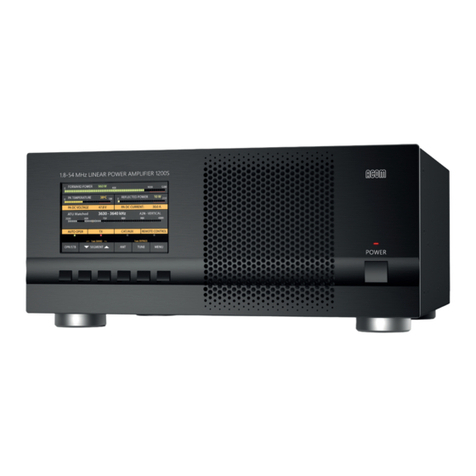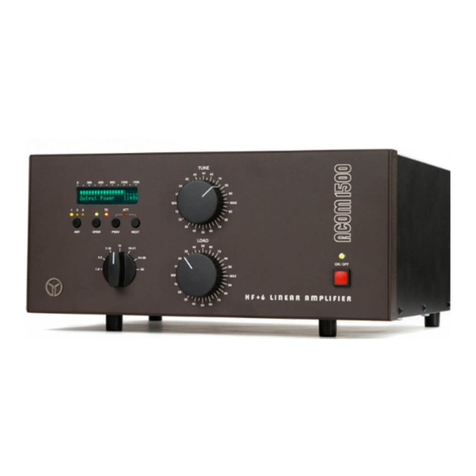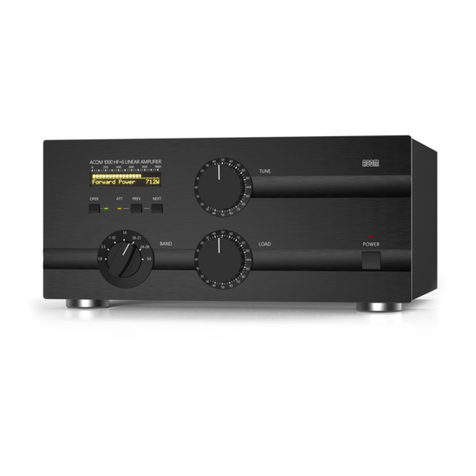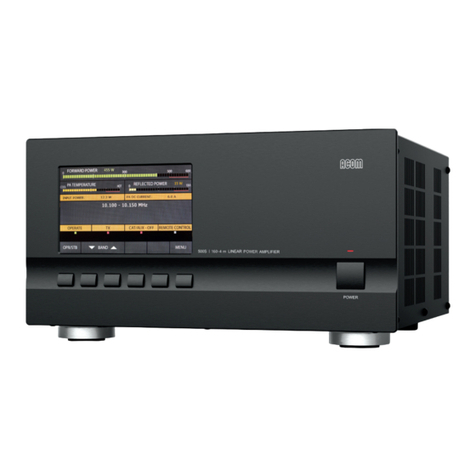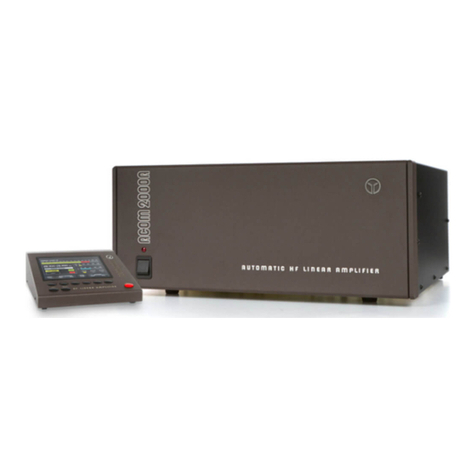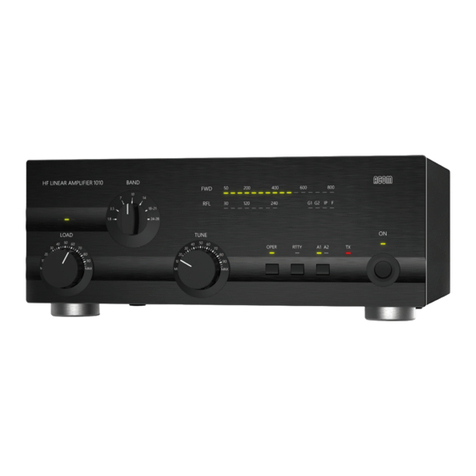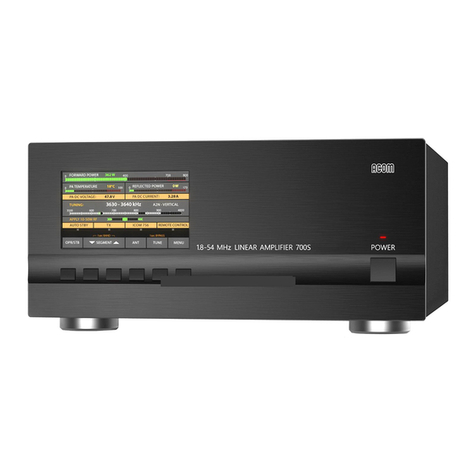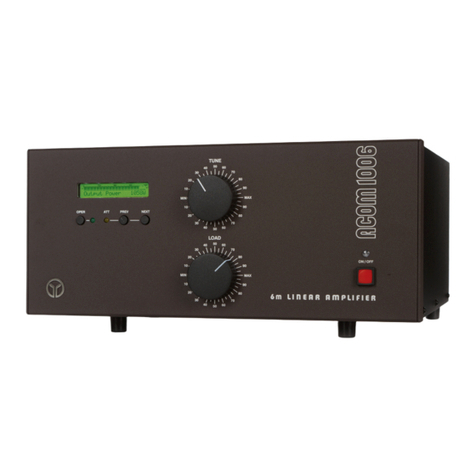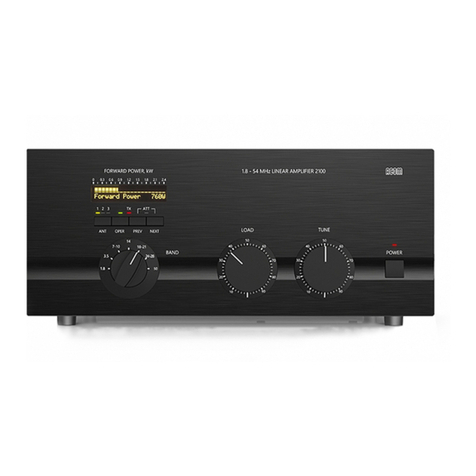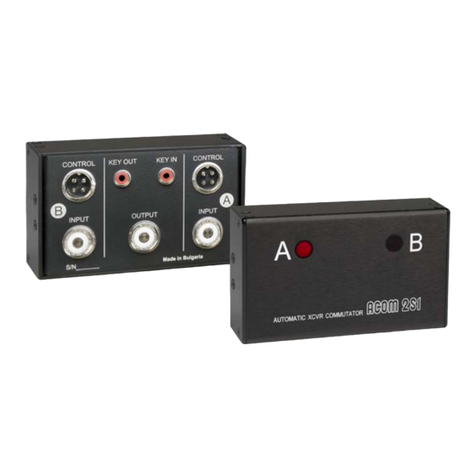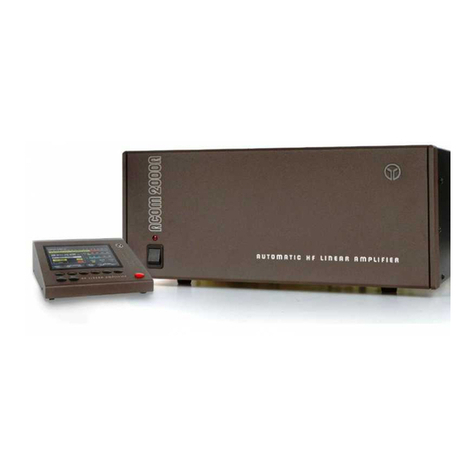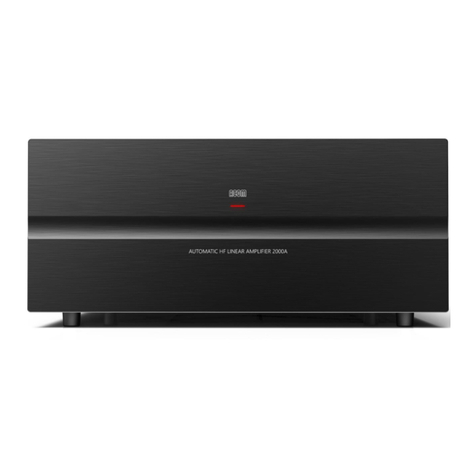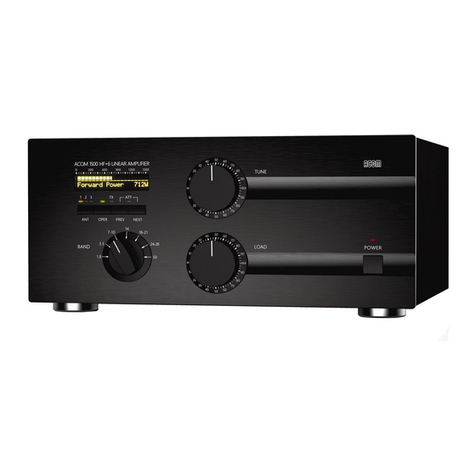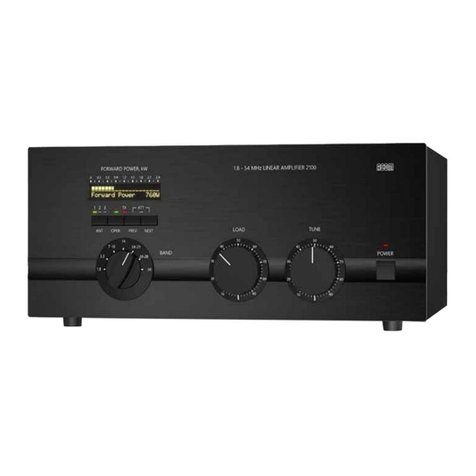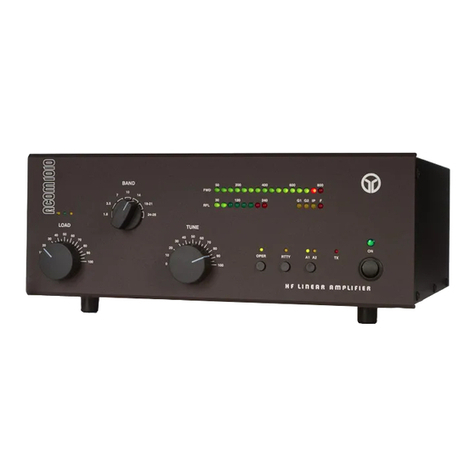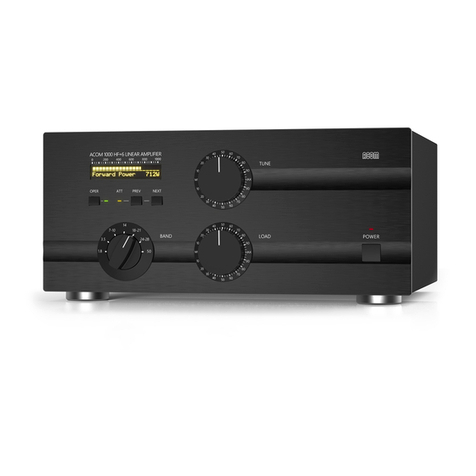
Page 1 of 33
ACOM 600S
HF + 6 m SOLID STATE LINEAR AMPLIFIER
OPERATING MANUAL
CONTENTS
1. GENERAL INFORMATION....................................................................................................................... 2
1-1. Inroduction and description..................................................................................................... 2
1-2. Owner assistance ................................................................................................................... 2
1-3. Equipment supplied and options ............................................................................................. 2
1-4. Features ................................................................................................................................. 2
1-5. Safety considerations, explicit definitions................................................................................ 3
2. INSTALLATION ........................................................................................................................................ 4
2-1. Unpacking and Initial Inspection ............................................................................................. 4
2-2. Amplifier location selection; cooling. ....................................................................................... 4
2-3. Connecting the amplifier within the shack ............................................................................... 5
2-4. Installing options and connecting to external devices (transceiver, computer etc) .................. 7
3. INITIAL POWER ON AND SETTING INTO OPERATION ........................................................................ 9
3-1. Low-energy (waiting) mode of the power supply ..................................................................... 9
3-2. Front panel - controls and indication ....................................................................................... 9
3-3. Initial turning on – activation of the main power supply ......................................................... 10
3-4. Basic screen ......................................................................................................................... 10
3-5. Control system – buttons and menus.................................................................................... 12
3-6. Test transmission.................................................................................................................. 12
4. OPERATION WITH THE AMPLIFIER..................................................................................................... 16
4-1. Change of modes RX / TX and Operate / Stand-by; option AUTO OPERATE...................... 16
4-2. Band change, standard and expanded frequency coverage ................................................. 17
4-3. Change of antennas and operation with an external antenna tuner ...................................... 18
4-4. Cooling and fans operation; modes with increased heat loading........................................... 18
4-5. Monitoring the amplifier operating regime ............................................................................. 18
4-6. Automatic protection system................................................................................................. 18
5. MENUS – USEFUL INSTRUMENTS AND OPTIONS............................................................................. 20
5-1. Menu “Measurements in the amplifier” – AMP MEASURE.................................................... 21
5-2. Menu “Service functions in the amplifier” – AMP SERVICE. ................................................. 21
5-3. Menu “Selection of CAT/AUX interface” – CAT/AUX SETTINGS.......................................... 22
5-4. Menu “USER PREFERENCES”............................................................................................ 23
5-5. Reading the FAULTS LOG ................................................................................................... 24
5-6. Menu "RESTORE DEFAULT SETTINGS" ............................................................................ 25
6. REMOTE MONITORING AND CONTROL ............................................................................................. 26
6-1. General information .............................................................................................................. 26
6-2. Commands set...................................................................................................................... 26
7. MAINTENANCE ..................................................................................................................................... 27
7-1. Periodic maintenance; general checks and cleaning ............................................................ 27
7-2. Replacement of fuses ........................................................................................................... 27
7-3. Simplified schematic diagram; theory of operation................................................................ 28
7-4. Using the fault codes (signatures) for diagnostics................................................................. 31
7-5. FIRMWARE UPDATES ........................................................................................................ 32
8. SPECIFICATIONS.................................................................................................................................. 32
8-1. Parameters ........................................................................................................................... 32
8-2. Functions .............................................................................................................................. 33
8-3. Storage and shipment........................................................................................................... 33
9. DISCLAIMER of LIABILITY .................................................................................................................... 33
